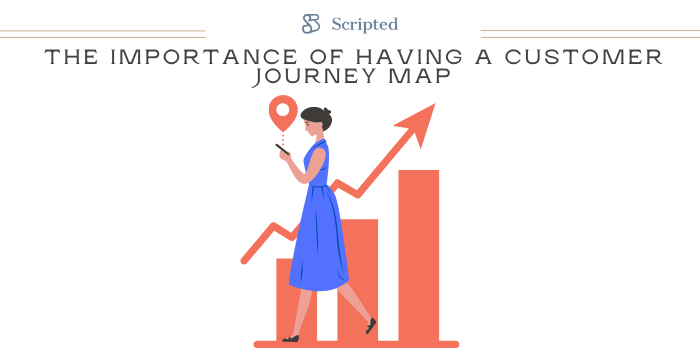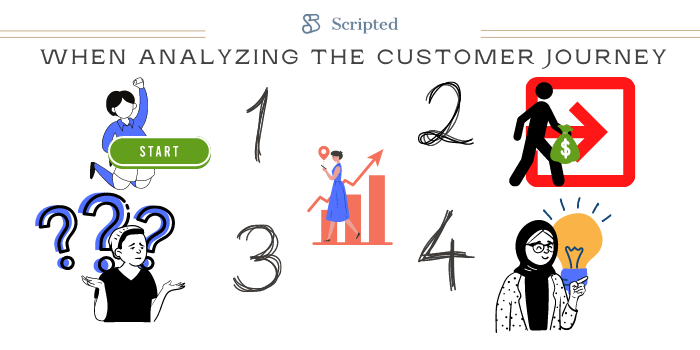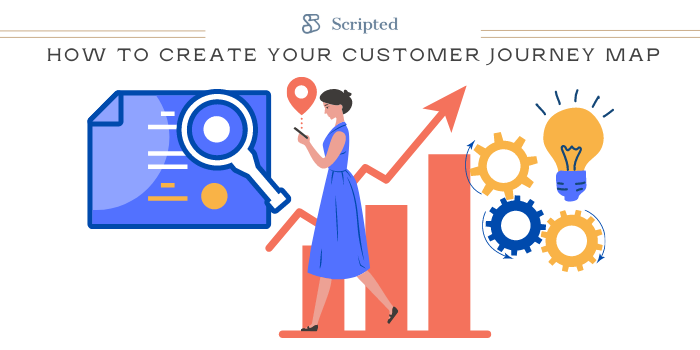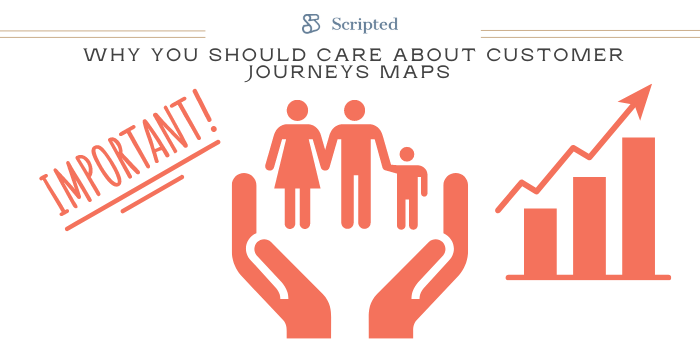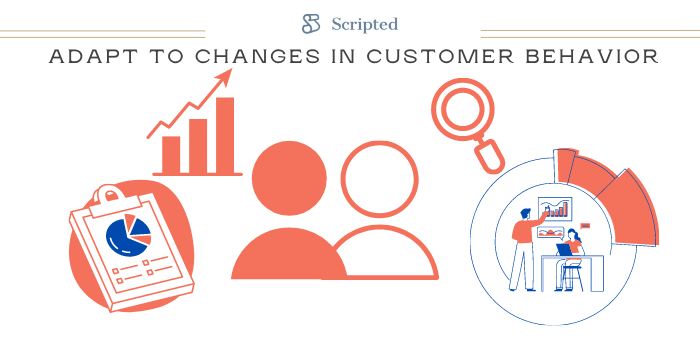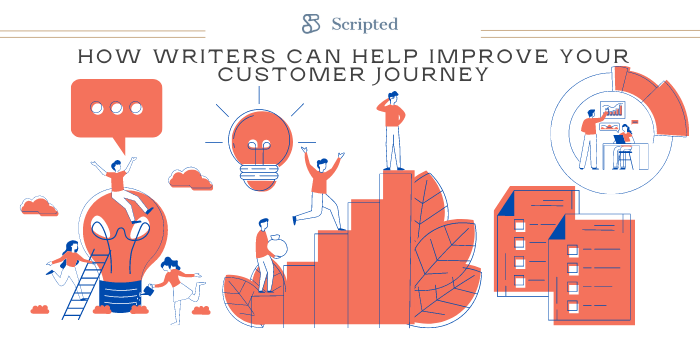- Blog Home
- Content Strategy
- Ciara Antolini
- A Guide To A Customer Journey Map
A Guide to a Customer Journey Map
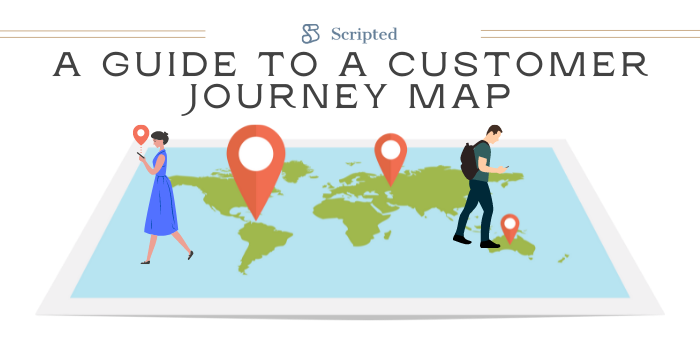
When you're looking to improve your customer experience, it's essential to know what the customer is doing. A Customer Journey Map is a visual representation of a customer's journey through your website or app, from start to finish. It allows you to see where they are dropping off and why they are leaving—all in an easy-to-use map format!
The importance of having a customer journey map
Customer journey maps are a great way to see where customers are dropping off, as well as what your customer's experience is like.
Understanding where your customers are dropping off is a great way to see what you need to improve on your content marketing strategy and how best to do it. For this map to be effective, you need enough information on individual customer data to capture each person's experience from start (acquisition) all the way through the end (purchase). The goal is not just about tracking numbers if people drop off but understanding why they did so.
The four questions you should ask when analyzing the customer journey
These questions will help you understand what the customer's experience is like before and after they've been through your website or app.
#1 Where did the customer start?
What is their level of engagement with your company before they drop off? What brought them to your site in the first place (a call from an ad campaign or search engine)? How often do they visit, and what's going on while they're there (watching videos, downloading documents)?
You should also look for other data points, like how long it took to reach this point. All this will help you understand where things are breaking down in the conversion process.
#2 When does the customer drop off?
This step is all about figuring out when people leave--what tasks were completed at this point? Where did they go, and what were the last actions before leaving?
Look for pages that have a high bounce rate, time on site below average or other anomalies. These are areas you need to improve.
#3 Why does the customer drop off?
This is where understanding your customers comes in handy. What's happening at this point of their journey from the start (acquisition) to finish (purchase)? What caused them to leave without completing their task or purchase? It might be something simple like not finding what they're looking for quickly enough, or it could be more complicated, such as an error message popping up causing confusion. Whatever it is, make sure you figure out why so you can fix it.
#4 What can we do to improve the customer experience?
This is where you start thinking about possible solutions for fixing what went wrong during this section of the customer's journey. Is it a design problem, or are your expectations too high? The key here is understanding that there isn't always one answer--sometimes, two seemingly opposite things could be at play, and both need attention to create change. This step should also include an action plan with specific steps to bring these changes into effect.
How to create your customer journey map
To create a customer journey map, you need a few critical pieces of information:
Customer persona:
When it comes time to start improving customer experiences, the first thing is thinking about them in terms of personas: Who are these people that we're designing our customer journey map for? What do they want or need? How does this reflect on our design decisions?
Customer personas are great tools to help you figure out what customers are looking for in your company. They're often used as a way of understanding customer needs. Researching and creating customer personas is one way to help you stay focused on solving the correct problems.
Conduct qualitative research with customers or potential customers using techniques such as surveys, interviews, focus groups, or workshops to understand their needs more deeply.
Purchase journey
Purchase journeys can differ from business to business. A purchase journey is a cyclical process that begins with awareness and ends after the sale.
A customer's experience in each stage of this cycle can usually be broken down into five phases: awareness, consideration, purchase, retention, and advocacy. These phases segment data in an easy-to-understand format and help us create better and more informed journey maps.
However, the five phases listed above are only guidelines, and depending on your industry or product, may include fewer or more phases.
Touchpoints
Touchpoints are the points of contact a customer has with your business, and they often play an integral part in telling the story.
Touchpoints are important to consider when creating a content marketing strategy and should be prevalent throughout the entire customer journey: from marketing materials to product packaging and online interactions. They're also crucial when figuring out what steps need to be taken next when mapping out your customers' journey. Touchpoint analysis can help you understand which touchpoints have been successful for other businesses like yours, as well as where opportunities exist that might not have been considered yet- all through quantifiable data on effectiveness.
It is a general rule of thumb that it takes seven touch points with a potential customer before purchasing. Using this info, your business can strategize where your touchpoints will be along with the customer journey map.
Customer thoughts & actions
Taking the time to see what customers are saying about your product or service can help you refine your customer journey map.
These thoughts and actions are available in the form of reviews, comments on social media, feedback cards, or surveys- all varying in the ways they're completed.
Almost all businesses have reviews on some form of social media. Whether it be Facebook, Twitter, or Instagram, every post gets a little bit of feedback from customers or potential customers. Customer review sites like Yelp are also popular and can help you find out more about your customer's experience with your product.
Customers' needs change over time, so don't be afraid to update your customer journey map if new insights arise from research.
Customer pain points
Knowing your customer's pain points and prioritizing them is crucial in mapping out a customer journey map.
Asking your customers what their most significant pain point is or where they feel the most frustrated with your company can be helpful when considering these areas for improvement.
You can also look at the reviews of competitor businesses to assess what pain points might be familiar to the industry as a whole.
Be sure not to discount your customers' feedback just because they're complaining about something that seems like an obvious issue for you.
You can use the information gathered about pain points and look to address them with your touchpoints.
Customers mindset & emotions
The emotional journey of your customers can be a crucial indicator of what will work and what won't for your customer journey map.
It can help you see where they're feeling most engaged, excited, or frustrated with your company- so consider these when planning out the next steps of their experience.
This is also an important area where your touchpoints can come into play again: if one particular touchpoint isn't meeting its goals in this section, then it's time to make changes accordingly.
You should always want customers' mindsets and emotions at the heart of every step on their journey map because, after all, there are no happy customers without an emotional connection.
Opportunities for improvement
After repetitive research and optimization, you should have a good idea of where your customers may be dropping off in your customer journey map.
Possible opportunities for improvement are a great way to brainstorm new ideas and make improvements that have been long-overlooked.
To ensure your customer experience is constantly improving, you need to review your data regularly, and spot dips in customer satisfaction.
Look at the data generated from touchpoints throughout the entire customer journey and feedback gathered by customers or potential customers. These two areas provide invaluable information on how people feel about your business overall. It will help guide decision-making now and keep future marketing efforts on target and successful.
Why you should care about customer journeys maps now more than ever before
As a business operating in the digital age, you have access to many tools capable of tracking your performance online. Take advantage of this by using web analytics to track your website's visitor traffic and conversion rates.
Never before in history has a business been able to track its success so quickly- which is why it's essential to take full advantage of this and use customer journey mapping as a way to understand how your customers are feeling about you.
Customer journey maps may seem like a hassle because of the time it takes and all the research involved, but this is one project you should not avoid.
It can be easy for your business to work on superficial changes that only give temporary results when more significant problems underneath need more attention.
A customer journey map will help you pinpoint these deeper issues so they don't continue affecting customers' experiences with your company in a negative way- which could lead them to stop spending money with you altogether if left unchecked.
Adapt to changes in customer behavior
Your industry is constantly changing with innovations, new technologies, and evolving customer needs.
To stay on top of your game in this ever-changing environment, you need to be willing to adapt to change as it happens. If any changes occur during the development or implementation phase outside what was initially planned for, make necessary adjustments accordingly before proceeding with production.
The more often things change within an industry, the more critical it becomes for businesses to remain flexible and open-minded about how they operate their business model to continue being successful no matter what circumstances arise.
While creating customer journey maps may be time-consuming, be prepared to update them regularly or even wholly redo them if necessary because it's an investment that will pay off.
How writers can help improve your customer journey and revenue overall
Every successful customer journey involves building excitement and emotional attachment through storytelling.
From ad copy, video scripts, and blog content, professional writers can help you build a narrative that will help attract and convert more customers, leading to revenue generation. Professional writers are also able to work as or alongside your content strategist to come up with content and ad ideas.
Scripted is a platform that connects businesses with some of the best professional writers in the industry ready to help you generate high converting content at scale.
Your business will have the opportunity to share your campaign goals and receive project proposals from our writers to write content that gets you closer to achieving those goals.
Conclusion
A customer journey map is a powerful tool for understanding your customers' behavior and motivations as they interact with your brand. It can also help you identify opportunities to improve the customer experience, increase sales conversions, and create stronger relationships that will last longer than any fleeting transaction. If you want to know more about how this process works or are ready to hire a writer/content strategist to create high-converting content for you today, click the link here to learn more.
Published by Ciara Antolini on Tuesday, November 2, 2021 in Content Strategy, Content, Guide, Guides.
